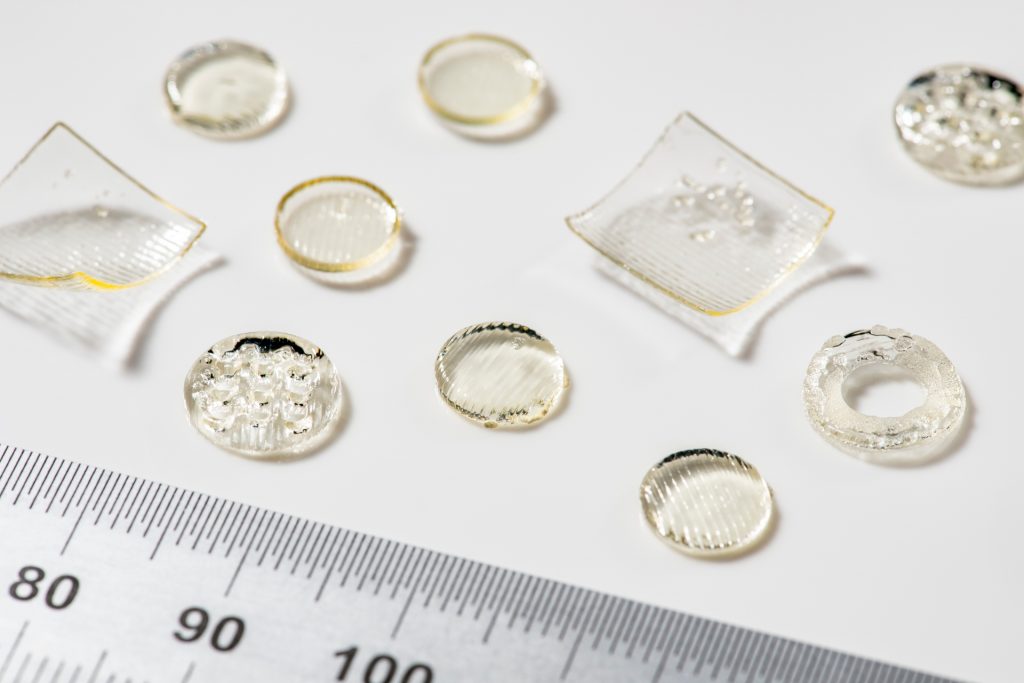The design freedom granted by additive manufacturing allows designers and engineers to tailor a product to better meet its application’s needs. In the field of pharmaceuticals, the sizes and geometries of drug delivery devices such as tablets can be modified to control their release and dosage profiles. This enables personalized medication for individual patients, mitigating some of the side effects that can be associated with generic, mass produced delivery devices.
A recent special issue editorial by scientists from Queen’s University Belfast details the production of pharmaceuticals and drug delivery devices using a variety of 3D printing technologies. The paper, published in the journal Pharmaceutics, aims to explore the ways in which drug delivery can benefit from 3D printing, giving readers an overview of the work being done by researchers in the field.

Fused deposition modeling
The special issue starts off with a 2020 study led by Bhupendra Giri at Kyungpook National University, whereby gastro-retentive floating tablets (GRFT) that were able to stay afloat above normal stomach contents were fabricated via FDM. PLA filament was infused with theophylline along with hydroxypropyl cellulose and hot melt extruded. The tablets varied in infill densities and shell thicknesses, and were assessed by drug contents, dissolution rates, floating properties, and their physiochemical behaviour.
The researchers found the GRFTs could float for 10 hours and displayed zero-order release kinetics. It was concluded that the 3D printed tablets had preferable controlled release rates when compared to traditionally manufactured tablets, counteracting some of the common problems with oral dosages such as unpredictable gastrointestinal transit and metabolic degradation.
Stereolithography
Another study featured in the special issue utilizes the SLA process to 3D print oral dosage forms containing aspirin and paracetamol. The research team, led by Andrew Healy at the Athlone Institute of Technology, used a photopolymer resin infused with the drugs to produce 28 tablets of 2.5% and 5% concentrations.
The fabrication of the batch showed the potential for mass production through the use of SLA, while also highlighting the effect drug infusion can have on the final shape and size of SLA fabricated tablets. The final products had dimensions significantly different to the intended design, leading the researchers to believe the drugs affected the shrinkage profile of the photopolymer resin. Upon studying the release profiles, the team also found a correlation between drug loading and active drug release, giving way to the potential of patient specific tablets using SLA.

Selective laser sintering
The special issue then goes on to discuss the work of a research team, led by Atheer Awad at University College London, who used SLS to produce miniscule tablets with modified release profiles. Single miniprintlets containing paracetamol and dual miniprintlets containing paracetamol and ibuprofen were fabricated. The single miniprintlets used ethyl cellulose (EC) as a polymer matrix for sustained release whereas the double miniprintlets used one layer of EC and one layer of Kollicoat IR for immediate release. Two variants of each type of miniprintlet were produced, one with a diameter of 1mm and another with a diameter 2mm.
The single miniprintlets showed a slow paracetamol release, which reduced as the diameter increased but the dual miniprintlets were not affected by diameter. With the work, the researchers validated the use of SLS in combining multiple active pharmaceutical ingredients to produce a single drug delivery device.
Further details on the 3D printing of pharmaceuticals with a range of technologies can be found in the special issue titled ‘3D Printing of Pharmaceuticals and Drug Delivery Devices’. It is co-authored by Essyrose Mathew, Giulia Pitzanti, Eneko Larrañeta, and Dimitrios Lamprou.
While the special issue was focused on oral pharmaceuticals, 3D printing has previously been used in some less conventional drug delivery methods. Last year, Renishaw initiated a medical study seeking to help sufferers of Parkinson’s disease, with an implant that delivers cerebral dopamine neurotrophic factor to affected areas of the brain. The brain implant had 3D printed titanium transcutaneous ports that were inserted behind the patient’s ear. Elsewhere, at Washington State University, researchers have 3D printed a contact lens to rival laser eye surgery. The lens is home to a microneedle array capable of delivering drugs directly to a patient’s eye.

The nominations for the 2020 3D Printing Industry Awards are now open. Who do you think should make the shortlists for this year’s show? Have your say now.
Subscribe to the 3D Printing Industry newsletter for the latest news in additive manufacturing. You can also stay connected by following us on Twitter and liking us on Facebook.
Looking for a career in additive manufacturing? Visit 3D Printing Jobs for a selection of roles in the industry.
Featured image shows 3D inkjet printed cylinder carvedilol tablets. Photo via University of Nottingham.



